
伤口世界
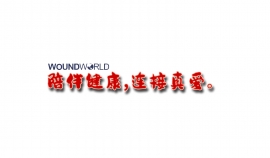
- 星期三, 31 1月 2024
Improving detection rates of vitamin B12 deficiency caused by metformin
Our companion article outlines how metformin use can lead to a clinically significant deficiency in vitamin B12, and describes the problems this can cause. In this comment, we outline a project conducted in four primary care practices that aimed to improve metformin-related vitamin B12 deficiency detection rates in people with diabetes.
Shafali Khanom
Medical Student, University of Sofia, Bulgaria
Mosammath Monira Khatun
Medical Student, Imperial College London
Reshma Rasheed
GP, Chapel Street Surgery, Billericay
Citation:
Khanom S, Khatun MM, Rasheed R (2023) Improving detection rates of vitamin B12 deficiency caused by metformin. Journal of Diabetes Nursing
[Early view publication]
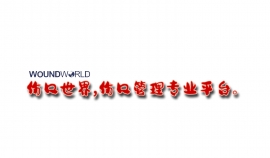
- 星期二, 30 1月 2024
When your child is diagnosed with type 1 diabetes: Experiences of parents who also have the condition
Melanie Burcham
While it is rare for both a parent and their child to have type 1 diabetes, paediatric diabetes teams may come across this situation. This article explores the experiences and opinions of four such parents following their child’s diagnosis, and how diabetes teams can meet the needs of these families. The themes discussed include the emotional impact of a child’s type 1 diagnosis on the parent, and how their experience and knowledge of the condition can benefit their child, as well as providing challenges resulting from the parent’s own trauma of living with diabetes. Strategies for supporting and educating families following a child’s diagnosis, which include acknowledging the personal experiences that a parent with type 1 diabetes can bring and discussing emotional health routinely, are explored.
Citation: Burcham M (2023)
When your child is diagnosed with type 1 diabetes: Experiences of parents who also have the condition. Journal of Diabetes Nursing 27: JDN288
Article points
1. When a parent with type 1 diabetes has a child diagnosed with the same condition, the paediatric diabetes team must consider how to meet the particular needs of that family.
2. The parent’s experience of type 1 diabetes may bring feelings of guilt and grief, and other emotional challenges, as well as potential benefits arising from their knowledge of the condition. Paediatric diabetes teams need to acknowledge the additional pressures that such parents face, identify their specific needs and evaluate how to support the family.
Key words
- Children with type 1 diabetes
- Diabetes distress
- Emotional support
- Parents with type 1 diabetes
Authors
Melanie Burcham, Paediatric Diabetes Clinical Nurse Specialist, Royal Free Hospital, London.
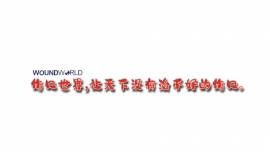
- 星期一, 29 1月 2024
Improved Bates-Jensen score following negative pressure wound therapy on wounds of various aetiologies: an experience from a tertiary care centre
Aim: The objective of this study is to evaluate the safety and efficacy of a negative pressure wound therapy (NPWT) device in trauma and other complex wounds.
Methods: The present clinical study is a prospective, interventional study conducted at a tertiary care center. NPWT was applied and the Bates-Jensen Score was calculated to assess the improvement in
wound healing outcomes.
Results: Twenty-two patients were assessed. The outcomes demonstrated that NPWT treatment reduced Bates-Jensen score when compared with the baseline score.
Conclusion: This indicates that NPWT therapy facilitates wound healing by increasing granulation tissue formation and lowering wound exudate levels.
Key words:
■Bates-Jensen Score,
■Negative pressure wound therapy
■Trauma Wounds
■Wound Exudate
■Wound Healing
■Wound management
Sushma Sagar is Professor, All India Institute of Medical Science, New Delhi, India;
Parvez Mohi Ud Din Dar is Senior Resident, All India Institute of Medical Sciences New Delhi;
Subodh Kumar is Professor, All India Institute of Medical Sciences New Delhi;
Amit Gupta is Professor, All India Institute of Medical Sciences New Delhi
This article first appeared in our sister publication Wounds Asia in volume 5 issue 2. Citation: Improved Bates-Jensen score following negative pressure wound therapy on wounds of various aetiologies: an experience from a tertiary care centre. Wounds Asia 5(3): 15–21
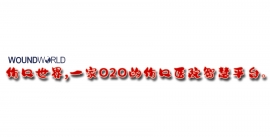
- 星期四, 25 1月 2024
Empowering diabetes self-management: A qualitative study on developing and evaluating health literacy tools for virtual consultations with certified diabetes educators
Nazli Parast, Pamela Walsh
This article presents a quality improvement study focused on developing a health literacy assessment tool for certified diabetes educators in Canada to use during virtual consultations with people diagnosed with type 2 diabetes. The study aims to improve healthcare professionals’ understanding of their patients’ health literacy levels in order to provide tailored education and support for diabetes self-management. It explores the prevalence and management of diabetes, the role of health literacy and education in diabetes management, and the significance of the study. The research questions address the effectiveness and practicality of existing health literacy tools in virtual consultations, the potential for improvement or development of a new tool, and the implications for patient-centred care in diabetes education. The article emphasises the importance of assessing health literacy in virtual consultations to ensure effective diabetes management and better outcomes for individuals living with the condition.
Citation: Parast N, Walsh P (2023) Empowering diabetes selfmanagement: A qualitative study on developing and evaluating health literacy tools for virtual consultations with certified diabetes educators. Journal of Diabetes Nursing 27: JDN311
Article points
1. A study was conducted to develop a tool to assess during virtual consultations the health literacy of people with type 2 diabetes.
2. For healthcare professionals to provide effective diabetes education, it is essential that an understanding of an individual’s health literacy is gained.
3. Through a quality improvement approach, participating certified diabetes educators helped to develop a new tool with the potential to help ensure effective self-management and improved outcomes.
Key words
- Certified diabetes educators
- Health literacy tools
- Type 2 diabetes
Authors
Nazli Parast, Advanced Practice
Nurse and Diabetes
Nurse Educator, and Pamela
Walsh, Associate Professor,
Athabasca University, Athabasca,
Alberta, Canada.
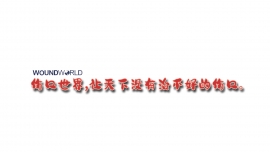
- 星期三, 24 1月 2024
DELIVERing reassurance that early eGFR reductions with SGLT2 inhibitors should not prompt drug discontinuation
A pre-specified secondary analysis of the DELIVER randomised controlled trial in 5788 people with heart failure with mildly reduced or preserved ejection fraction, with or without type 2 diabetes, explored the implications of early eGFR changes after initiation of dapagliflozin on later cardiovascular and renal risk. As expected, from baseline to 1 month, eGFR declines of >10% were more common in those actively treated with dapagliflozin than in those treated with placebo, occurring in 40% versus 25%. In placebo recipients, experiencing an initial eGFR reduction of >10% was associated with a higher risk of major adverse cardiovascular events. However, in those treated with dapagliflozin, although an initial eGFR reduction of >10% was common, this was not associated with adverse cardiovascular or renal outcomes compared to those treated with dapagliflozin who experienced smaller initial reductions in eGFR. The authors concluded that these findings reinforce the advice, based on earlier studies in those at high risk of cardiorenal disease, that SGLT2 inhibitors need not usually be discontinued or interrupted in response to an initial eGFR reduction. Other studies and editorials have concluded that routine monitoring of renal function is not required after initiating SGLT2 inhibitors unless volume depletion is considered a risk.
Pam Brown
GP in Swansea
Citation: Brown P (2023) Diabetes
Distilled: DELIVERing reassurance that early eGFR reductions with SGLT2 inhibitors should not prompt drug discontinuation. Diabetes & Primary Care 25: 205–7

- 星期二, 23 1月 2024
Breaking the cycle – Empowering healthcare professionals to overcome stigma in diabetes care
Deborah Christie
Professor of Paediatric and Adolescent Psychology, University College London Hospitals and Dartford and Gravesham NHS Trusts
Citation: Christie D (2023) Q&A: Breaking the cycle – Empowering healthcare professionals to overcome stigma in diabetes care. Diabetes & Primary Care 25: 183–6 Q&A
Article disclosure: This article describes research commissioned by Abbott, and Professor Christie was paid a fee by Abbott to contribute to this article. The views expressed are those of the author and not necessarily those of Abbott. The article was commissioned by the Editorial Board as a topic of interest. The journal has received no funding, and all peer review and editorial decisions have been made independently and according to the journal’s usual procedures.
Citation: Christie D (2023) Q&A: Breaking the cycle – Empowering healthcare professionals to overcome stigma in diabetes care. Diabetes & Primary Care 25: 183–6
